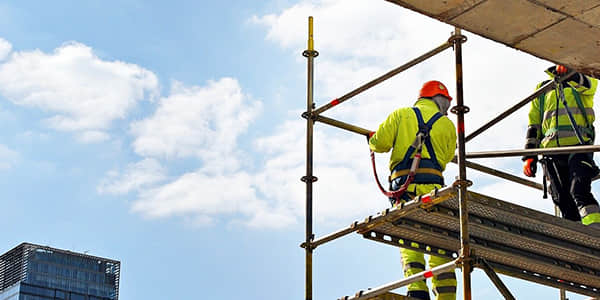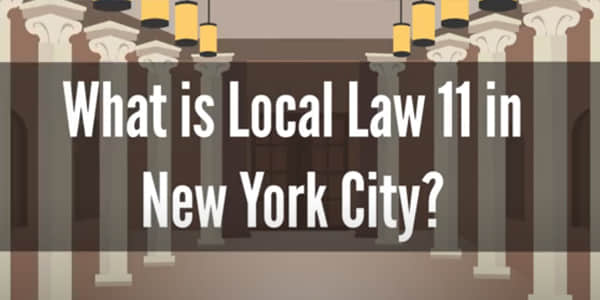Why is There So Much Scaffolding in New York? The Truth Behind the Urban Jungle
Sep 06, 2025New York City's skyline is one of the most recognizable in the world, a striking vertical landscape of glass, steel, and historic masonry. However, for many of the New Yorkers who live and work in and around it, the view from the street often seems defined by something else - its ever-evolving, seemingly infinite network of sidewalk sheds and scaffolds - a veritable multi-layered tapestry of temporary (sometimes painfully permanent) structures bedecking the street level of Manhattan and the outer boroughs, as much a part of the urban landscape as yellow cabs or hotdog vendors.
But what does it all mean? The reasons can be complex, as there are both historical safety frameworks, shifts in construction laws, and economic realities - not to mention the simple fact that a city with over one million buildings is constantly changing, and often under repair. For anyone engaged in the sectors of architecture, engineering, construction, or materials, this phenomenon is critical to understanding.


The one principal cause of the city’s "scaffolding jungle" is legislation called Local Law 11, or properly, the Façade Inspection & Safety Program (FISP). It is decreed in law because of an incident. A student was killed in 1979 by falling masonry that broke away from the facade of a building. The legislation was enacted to develop a plan that would provide a mechanism for inspecting the facades of buildings to avoid the same tragic events from happening again.
Local Law 11 mandates that every building over six stories in New York City has its exterior walls and appurtenances (balconies, fire escapes, etc) inspected by a licensed architect or licensed engineer every five years. The inspector files a report with the Department of Buildings (DOB) and assigns the building's facade one of three designations:
When a building is deemed "Unsafe," the owner legally has to install a sidewalk shed or scaffolding to protect pedestrians in the immediate area. The sidewalk shed or scaffolding will remain in place until the hazardous condition(s) are repaired, which, for various reasons, can take years.
While Local Law 11 is the most significant factor, several other laws and realities contribute to the omnipresent scaffolding:
Separate from Local Law 11, New York State has a strict "Scaffold Law" that has been on the books since the 19th century. This law holds building owners and contractors fully liable for worker injuries related to falls from heights. It places the burden of safety entirely on the employer, regardless of any negligence by the worker. This strict liability encourages a culture of extreme caution, with contractors and building owners investing heavily in robust, often over-engineered, scaffolding systems and safety protocols to mitigate risk and avoid costly lawsuits.
New York is never done. It is a city of perpetual renewal. In addition to facade repairs, thousands of construction projects, from new skyscrapers to complete gut renovations of historic brownstones, all require scaffolding. With so much construction happening, at any moment in time, a large portion of the city is part of an active construction project.
Cost is a primary reason that scaffolding remains up for years, while the cost of leaving a sidewalk shed up (for a building owner) is often less than the millions of dollars that can be expended for a complex facade restoration on older, landmarked properties. Delays from permits, complications in getting financing, and other bureaucratic red tape involved in historical preservation can perpetuate the delay of a project, and sidewalk sheds and scaffolding become an indefinite temporary structure of the streetscape.
The "scaffolding" you see isn't a single type. Different structures serve different purposes:
While scaffolding is an integral part of public safety, it is not without its detractors. Residents and business owners decry the visual blight, loss of sunshine, and dark, uninviting corridors, all of which can detract from their local businesses. A recent study from the Mayor's office and Mastercard indicated that businesses with a scaffold experienced a dramatic reduction in weekly transactions and revenue.
Nonetheless, the City is working to address scaffolding. New reforms are designed to encourage building owners to expedite their repairs, and the City is working to create new designs for scaffolding that may be less of a nuisance. However, the hard truth is that as long as New York continues to build, age, and take public safety seriously, their streets will remain covered by these critical structures.
The ubiquity of scaffolding in New York is not a sign of neglect, but a testament to a city that takes public safety seriously. It's a physical representation of the city's complex legislative landscape and a visual marker of its endless evolution. For building owners, contractors, and suppliers, it represents a critical market driven by strict compliance and constant demand.
How long does scaffolding typically stay up?
Is all scaffolding in NYC related to Local Law 11?
What is the difference between a sidewalk shed and a scaffold?
Tags :